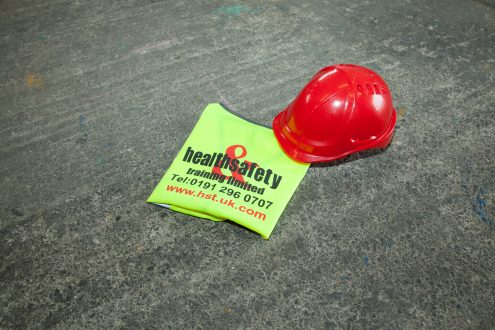Dealing with Spinal Injuries in the Workplace
The spine is simply a series of small bones called vertebrae, that provide protection for the bundle of sensitive nerves (spinal cord) that carry messages to other parts of the body.
Damage to the spine, even just to a single vertebrae, can result in serious injuries, ranging from pain and lack of feeling, to lack of mobility, paralysis and even death. If you suspect a colleague has a spinal injury you should seek immediate medical assistance.
Common Causes of Spinal Injuries in the Workplace
Spinal injuries can be the result of a range of different types of accident, usually involving trauma or extreme force to the body. For example, a fall or jolt could cause a violent twist or bend that may damage the spine.
All of the below types of movement could result in direct damage to the spinal cord, or indirect damage to the vertebrae, tissue or muscles surrounding it, and you should be aware of the possibility of temporary or permanent damage.
• A fall from height (ladder or scaffolding)
• An awkward fall (whilst stretching to reach something or carry out a task)
• A fall from a moving vehicle (forklift or tractor)
• A motor vehicle crash or collision
• A hit to the back, neck or head, from a heavy object falling
• Any injury to the neck, head or face.
How to tell if someone has a spinal injury
The spinal cord communicates with the rest of the body, so an injury can cause limitations on movement and severe pain for even the most basic of tasks, such as walking, standing or sitting. If someone has been involved in an accident and you think they may have a spinal injury, there are some key symptoms you should check for:
If the backbones or vertebrae are damaged the patient may:
- Experience neck or back pain
- Have an unusual shape or twist in the spine
- Be sore or visibly bruised around the spine
If the nerves or spinal cord are damaged the patient may:
- Lose control or movement of their limbs
- Lose sensation, or experience strange sensations such as tingling
- Lose control of their bladder or bowel
- Experience breathing or respiratory difficulties
What to do if you suspect someone has a spinal injury
In the majority of cases spinal injuries can be treated, but often result in a long, drawn out rehabilitation process and the inability to work for an extended period of time.
The most important thing to remember is to restrict their movement and call 999 for immediate medical assistance.
If they are conscious, reassure them and tell them not to move. You can support them by holding their head still and inline with their neck, or by placing rolled up towels/blankets around their head to stop them from moving.
If they are unconscious, lift their jaw without tilting their neck and open their airway. You can also place them into the recovery position. If they stop breathing, you need to start CPR and continue until the paramedics arrive.
There is always a risk that any movement to a person with a spinal injury could worsen the damage, so it is essential that every workplace has enough competent people trained to assist in the event of an emergency.
Health and Safety Training Ltd
Here at Health and Safety Training we tailor all our first aid training to suit the specific risks of the workplace. So in workplaces where traumatic injuries are more likely to occur, such as construction sites and warehouses, we’ll ensure your first aiders are fully trained with how to immobilise and support a suspected spine injury until professional medics arrive to take over.
To find out more, or to discuss your specific requirements for first aid training with a member of our team, simply contact us today.
UK Construction Week 2015 Bounce Back gives construction employment opportunity for ex offenders





